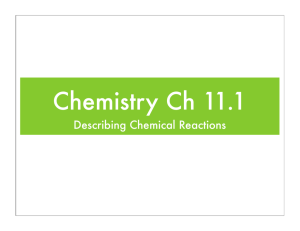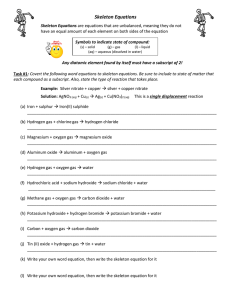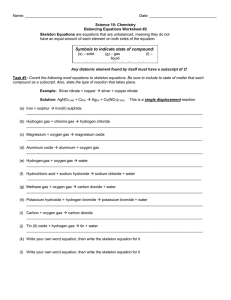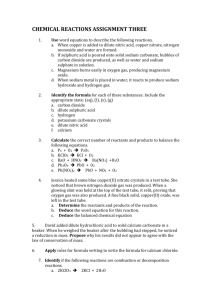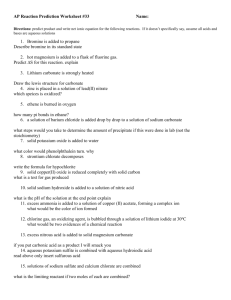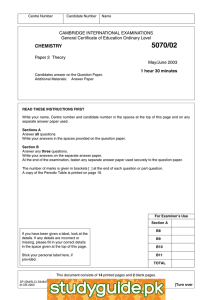3. Describe the steps in writing a balanced chemical equation.
advertisement
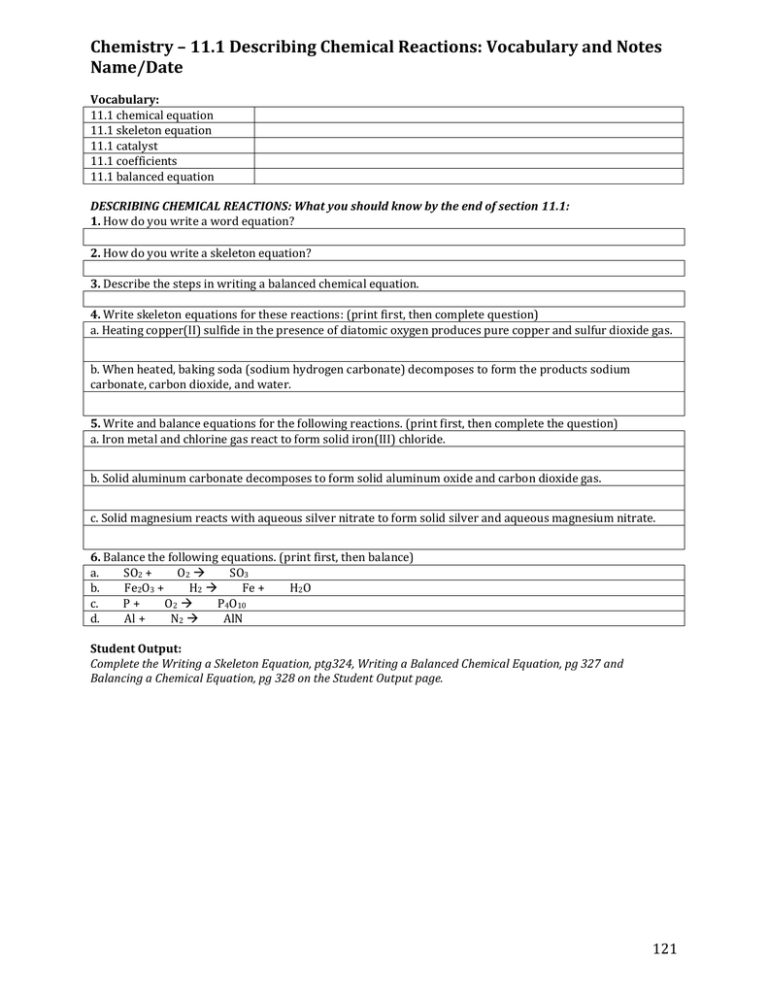
Chemistry – 11.1 Describing Chemical Reactions: Vocabulary and Notes Name/Date Vocabulary: 11.1 chemical equation 11.1 skeleton equation 11.1 catalyst 11.1 coefficients 11.1 balanced equation DESCRIBING CHEMICAL REACTIONS: What you should know by the end of section 11.1: 1. How do you write a word equation? 2. How do you write a skeleton equation? 3. Describe the steps in writing a balanced chemical equation. 4. Write skeleton equations for these reactions: (print first, then complete question) a. Heating copper(II) sulfide in the presence of diatomic oxygen produces pure copper and sulfur dioxide gas. b. When heated, baking soda (sodium hydrogen carbonate) decomposes to form the products sodium carbonate, carbon dioxide, and water. 5. Write and balance equations for the following reactions. (print first, then complete the question) a. Iron metal and chlorine gas react to form solid iron(III) chloride. b. Solid aluminum carbonate decomposes to form solid aluminum oxide and carbon dioxide gas. c. Solid magnesium reacts with aqueous silver nitrate to form solid silver and aqueous magnesium nitrate. 6. Balance the following equations. (print first, then balance) a. SO2 + O2 SO3 b. Fe2O3 + H2 Fe + H2O c. P+ O2 P4O10 d. Al + N2 AlN Student Output: Complete the Writing a Skeleton Equation, ptg324, Writing a Balanced Chemical Equation, pg 327 and Balancing a Chemical Equation, pg 328 on the Student Output page. 121
